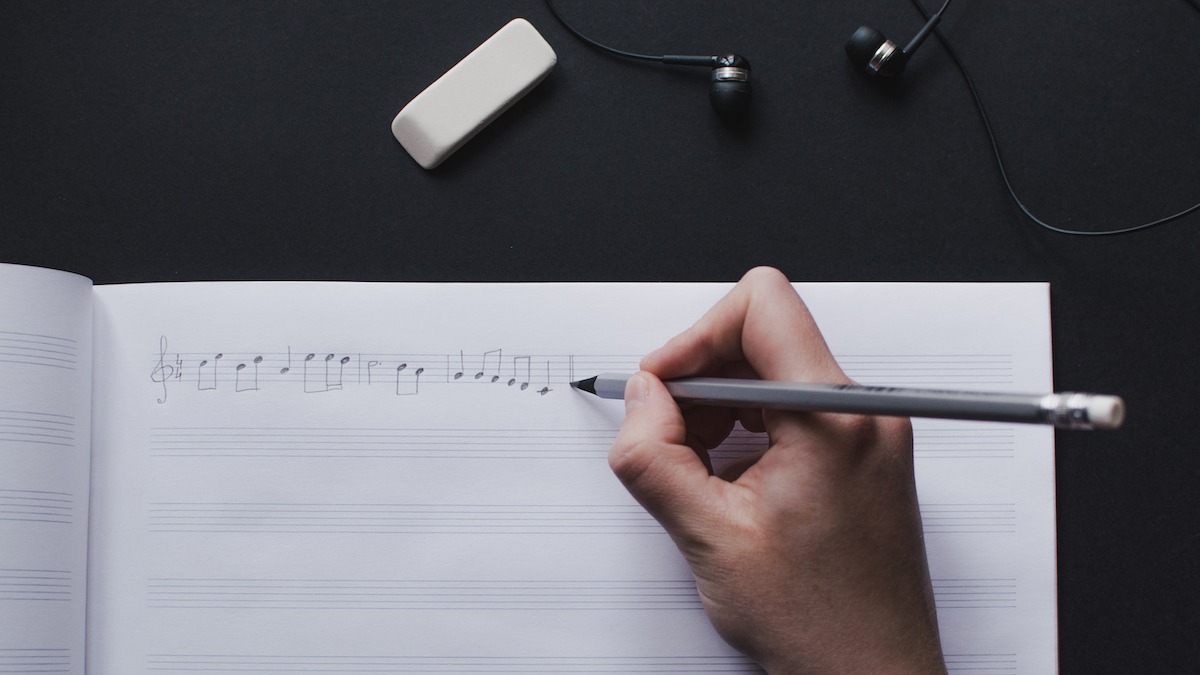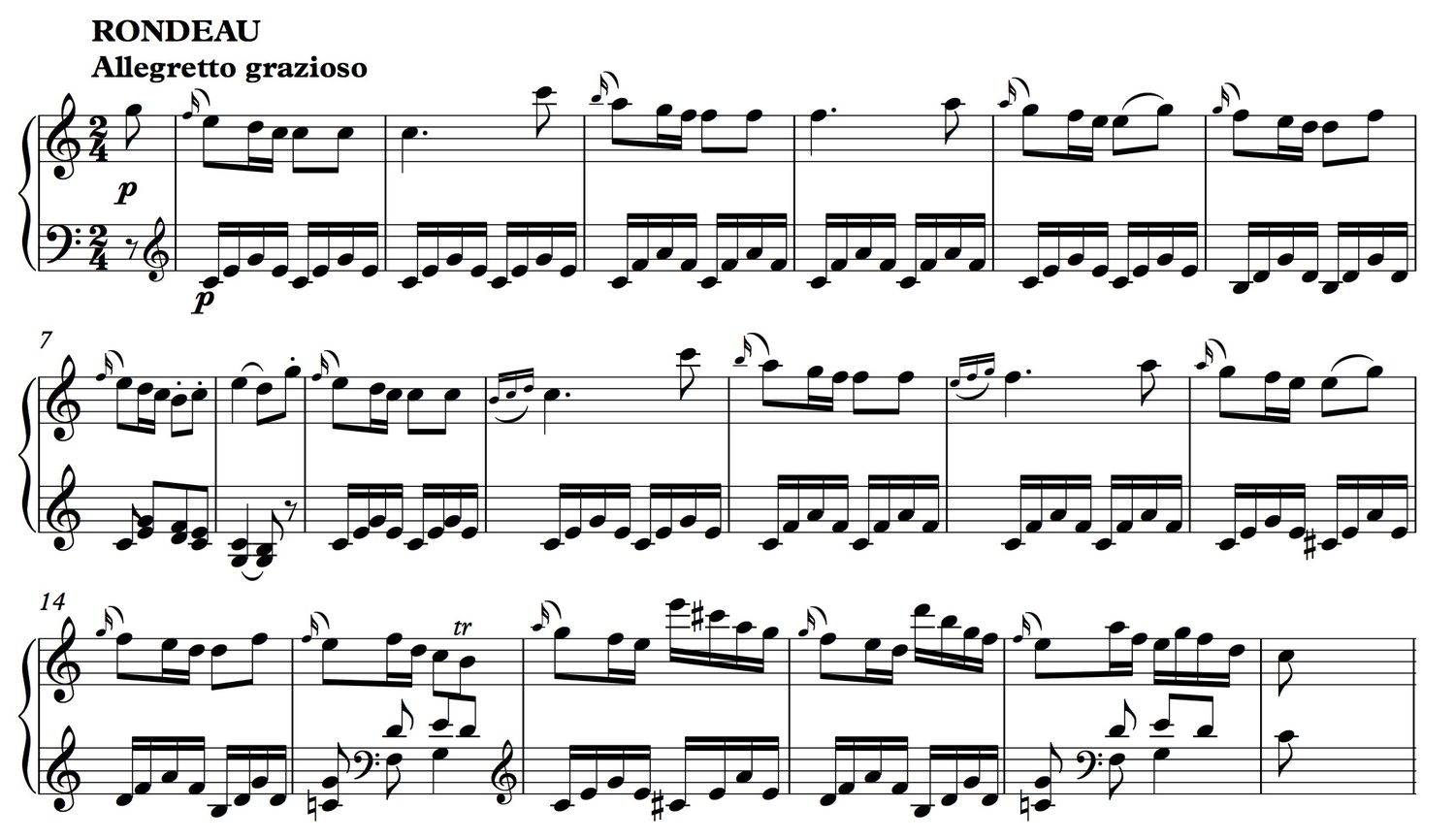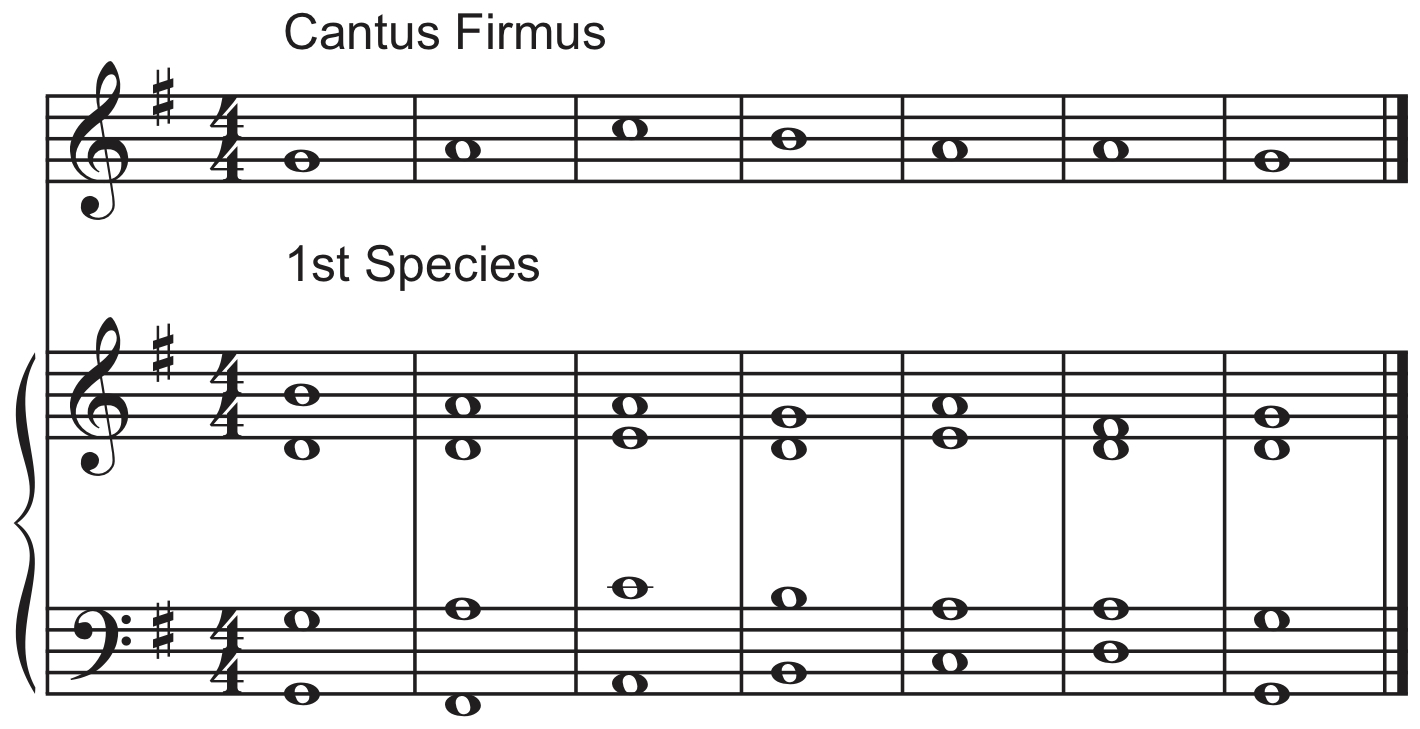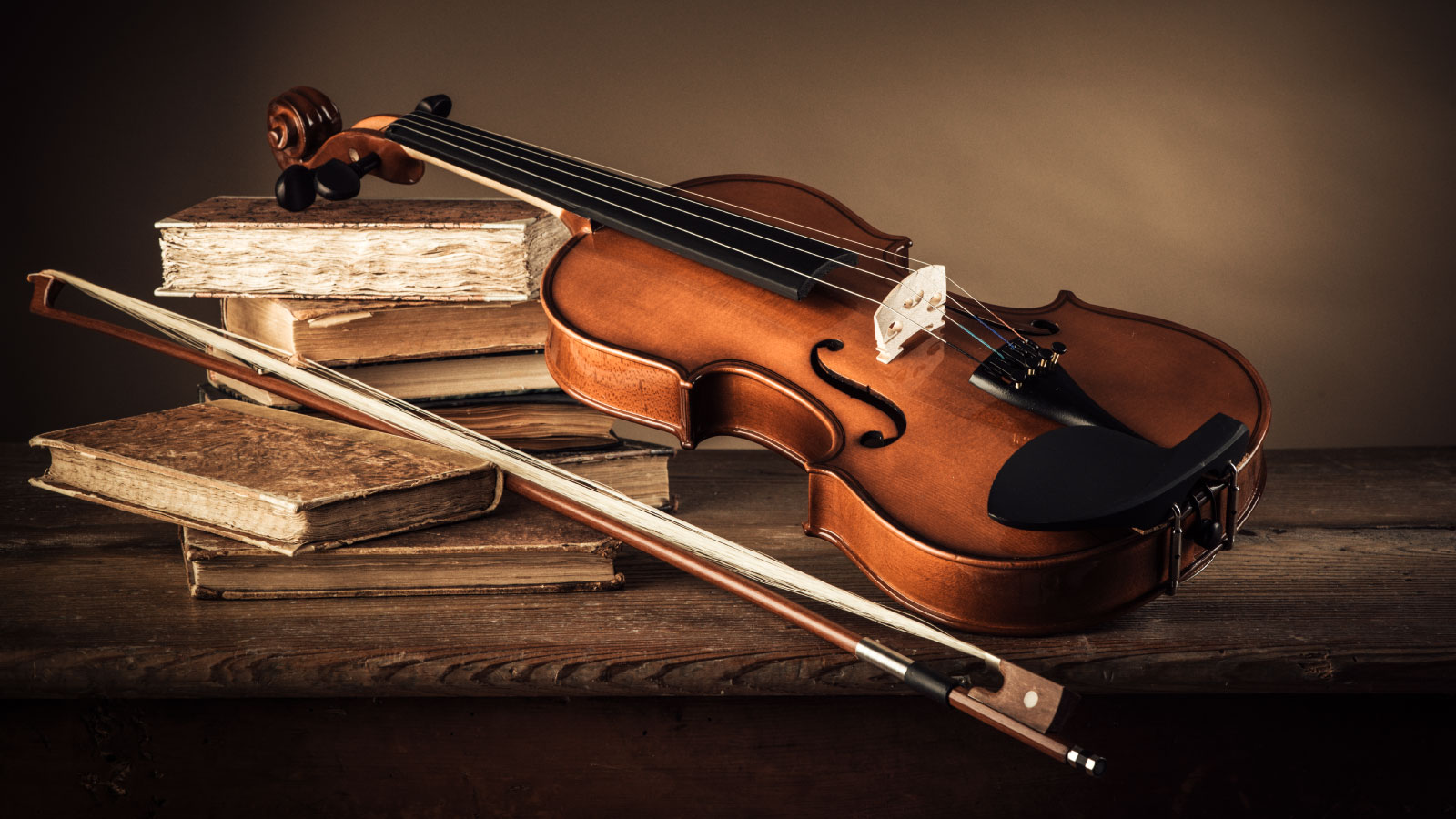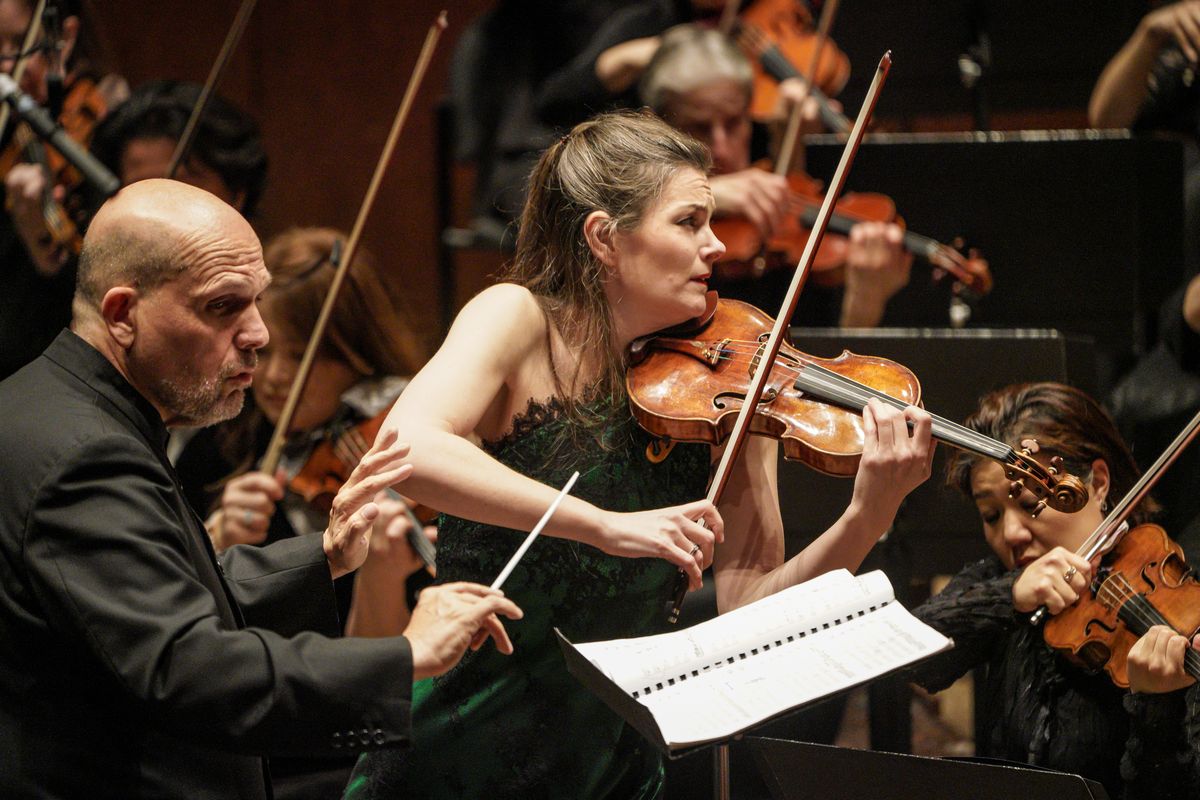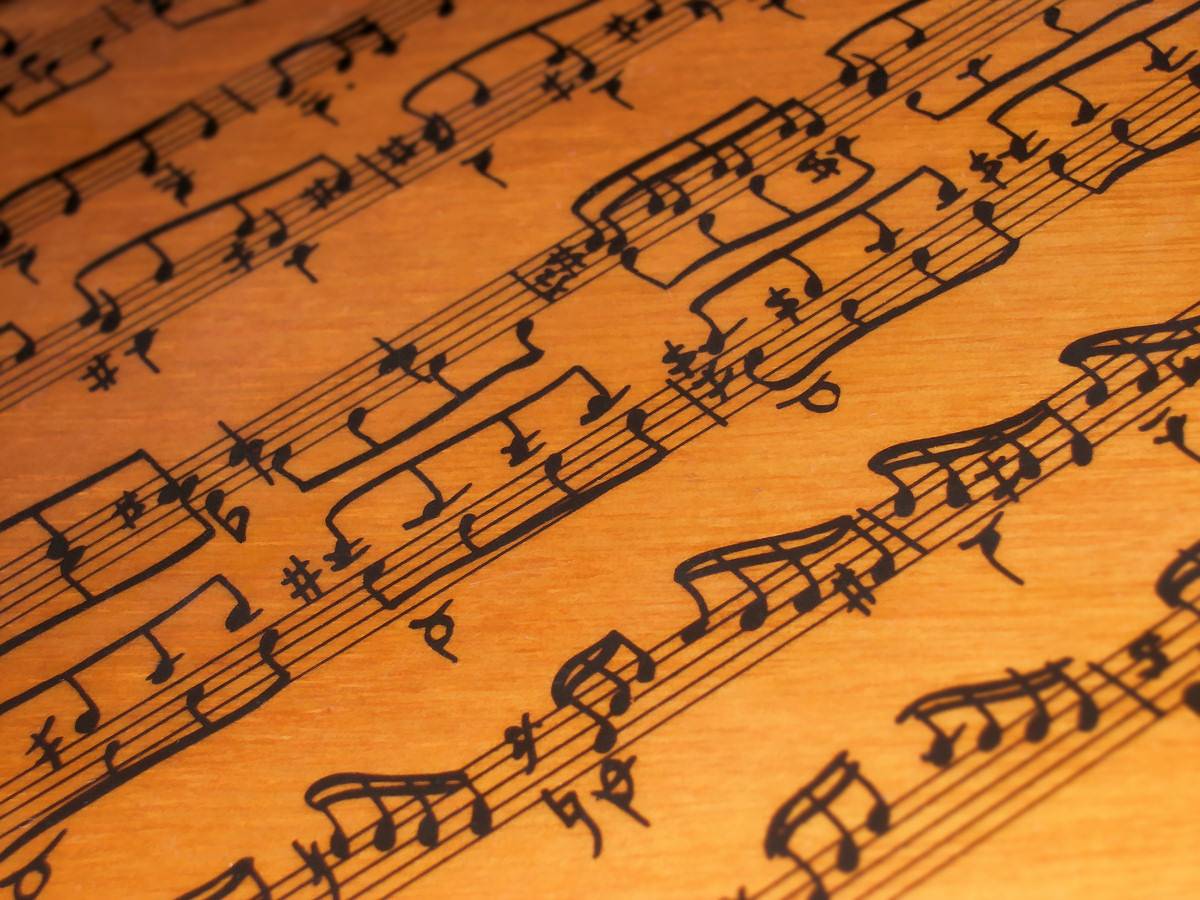

Classical
How To Write Classical Music
Modified: February 24, 2024
Learn the art of writing classical music with our comprehensive guide. Discover the timeless techniques and structure behind classical compositions.
(Many of the links in this article redirect to a specific reviewed product. Your purchase of these products through affiliate links helps to generate commission for AudioLover.com, at no extra cost. Learn more)
Table of Contents
Introduction
Classical music is a genre that has captivated and inspired audiences for centuries. Its timeless compositions and intricate melodies continue to be revered and performed by musicians around the world. If you have a passion for music and a desire to compose your own classical pieces, this article will serve as a comprehensive guide on how to approach writing classical music.
Writing classical music is a deeply rewarding and creative process. It allows you to express your emotions, tell stories, and connect with listeners on a profound level. Whether you are a beginner composer or have some experience in music theory, this guide will provide you with the tools and techniques to develop your own unique style and create compelling compositions.
In this article, we will explore various aspects of writing classical music, including finding inspiration, choosing a musical form, understanding melody and harmony, exploring counterpoint and texture, structuring and developing your compositions, considering instrumentation and orchestration, writing for voice, notation and score preparation, and the importance of editing and revising.
While there are guidelines and techniques to follow in classical music composition, it is also important to let your creativity flourish and embrace your own musical voice. The beauty of classical music lies in its ability to blend tradition with innovation, creating a harmonious blend of the past and the present. So, whether you dream of composing symphonies, sonatas, or operas, this guide will provide you with the foundation to embark on your musical journey.
Understanding Classical Music
Before diving into the process of writing classical music, it is essential to have a solid understanding of the genre itself. Classical music refers to the art music tradition that originated in Western culture during the 9th century and lasted until the early 20th century. It encompasses a wide range of styles and forms, including symphonies, concertos, sonatas, operas, and more.
One of the defining characteristics of classical music is its emphasis on structure and form. Composers carefully organized their compositions into distinct sections, such as movements or acts, typically following established structures like sonata form, rondo form, or theme and variations. Understanding these structural principles will provide you with a framework for organizing your own compositions.
Another important aspect of classical music is the expressive use of melody and harmony. Melody is the sequence of notes that creates a memorable and tuneful line, while harmony refers to the combination of multiple voices or instruments to create rich and complex sounds. Learning to craft melodies and harmonies that elicit emotions and convey your musical ideas effectively is crucial in classical music composition.
Additionally, classical music often incorporates intricate contrapuntal techniques, particularly in the Baroque period. Counterpoint involves the interplay of multiple melodic lines, each with its own individuality and yet fitting harmoniously together. Mastering counterpoint will add depth and complexity to your compositions, allowing you to weave intricate musical patterns.
Texture is another aspect to consider in classical music. It refers to the way different musical elements interact with each other. Classical music can have various textures, such as monophonic (a single melodic line), homophonic (a melody supported by accompanying chords), or polyphonic (multiple melodic lines interweaving with each other). Understanding texture will help you create a balanced and engaging musical experience.
Lastly, classical music often incorporates dynamic changes in volume and intensity. Composers utilize crescendos, decrescendos, and various articulations to create contrasts and evoke emotional responses from the listeners. Learning to effectively use dynamics in your compositions will add depth and impact to your musical expression.
By gaining a deeper understanding of these fundamental elements of classical music, you will be better equipped to compose your own pieces. Remember, studying the works of classical music master composers like Bach, Mozart, and Beethoven can serve as valuable sources of inspiration and education. With a solid foundation in the essence of classical music, you can confidently embark on your journey to create timeless compositions that will resonate with audiences for years to come.
Finding Inspiration
Finding inspiration is an essential first step in the process of writing classical music. It is the spark that ignites your creative energy and fuels the composition process. Inspiration can come from a variety of sources and can be found in both the external world and within yourself.
One of the most common sources of inspiration for classical composers is the natural world. The beauty of nature, the changing seasons, and the sounds of the environment can evoke powerful emotions and serve as a rich source of musical ideas. Take a walk in the woods, sit by a flowing river, or observe the colors of a sunset, and let these experiences inspire melodies, harmonies, and rhythms in your compositions.
Literature and poetry are also great sources of inspiration. Explore the works of great writers and poets from various eras and genres. The themes, emotions, and imagery found in their words can serve as a muse for creating evocative and expressive musical compositions. Consider setting a poem to music or capturing the essence of a beloved novel in a symphonic piece.
History and culture can also provide inspiration for classical music. Dive into the stories and events of different time periods and cultures, and let them transport you to another world. Whether it’s the majesty of ancient civilizations, the passion of a particular era, or the traditions of a specific culture, the rich tapestry of human history can inspire melodies, rhythms, and musical motifs.
Personal experiences and emotions are invaluable sources of inspiration as well. Draw from your own life journey, tapping into the range of emotions you have experienced. Joy, sorrow, love, and longing can all find their way into your compositions, giving them a personal touch and connecting with listeners on a deeply emotional level.
Furthermore, listening to the works of great classical composers can provide inspiration and help you develop your own musical style. Analyze the compositions of Mozart, Beethoven, Bach, and other revered figures, studying their melodic choices, harmonic progressions, and unique approaches to form and structure. While it is important to find your own voice, learning from the masters can provide a solid foundation and spark new ideas.
Remember, inspiration is all around you. Keep a journal or a digital notes app to jot down ideas, melodies, or interesting musical passages that come to you throughout the day. Be open to inspiration striking at unexpected times and places. Stay curious, explore different art forms, and allow your imagination to roam freely. By nurturing your sources of inspiration, you will have a wellspring of creativity to draw from as you embark on your journey of writing classical music.
Choosing a Musical Form
Choosing a musical form is a crucial step in composing classical music. The form provides a structural framework for your composition and guides the organization and development of your musical ideas. There are several traditional forms to choose from, each with its own unique characteristics and guidelines.
One widely used form in classical music is Sonata Form. Sonata Form typically consists of three main sections: the exposition, development, and recapitulation. The exposition introduces the main themes of the composition, usually in contrasting keys. The development section explores and develops these musical ideas, often through key changes and variations. Finally, the recapitulation brings back the themes from the exposition, often with some variations or modifications, and provides a sense of resolution. Sonata Form offers a balanced and cohesive structure for your compositions.
Another popular form is Theme and Variations. In this form, a musical theme is presented initially, followed by a series of variations that explore different aspects of the original theme. Variations can include changes in rhythm, harmony, texture, or melody, providing an opportunity for creativity and innovation while maintaining a sense of unity. Theme and Variations allow for flexibility and adaptability in your composition, offering ample opportunities for artistic exploration.
If you are looking for a more dramatic and narrative structure, consider using the Sonata Cycle. This form is commonly employed in multi-movement compositions such as symphonies or sonatas. The Sonata Cycle typically consists of four movements: an opening movement (usually fast and energetic), a slow movement, a dance-inspired or scherzo movement, and a finale. Each movement is distinct, yet they are interconnected through common themes or musical motifs, creating a cohesive and impactful composition. The Sonata Cycle offers a comprehensive framework for larger-scale compositions, allowing for diverse musical expression across multiple movements.
In addition to these traditional forms, there are other forms to explore, such as Rondo, Fugue, and Theme with Development. Rondo form features a recurring main theme that alternates with contrasting sections. Fugue is a highly structured and contrapuntal form in which a musical theme is introduced and then imitated by different voices or instruments. Theme with Development is a less rigid form that allows for variations and elaborations of a central theme. Experiment with these forms and find one that best suits the style and vision of your composition.
While understanding and utilizing these classical forms is important, remember that they are not strict rules to be followed. They are frameworks that you can use as a starting point and then modify and adapt to suit your musical vision. Feel free to combine elements from different forms or create your own unique form, blending tradition with your personal artistic expression.
Ultimately, the choice of musical form should be driven by the content and emotional intent of your composition. Consider the mood, themes, and ideas you want to convey, and determine the form that best serves your musical narrative. By choosing a fitting musical form, you will provide structure and coherence to your compositions, creating a compelling and well-crafted musical experience.
Melody and Harmony
Melody and harmony are two essential components of classical music that work together to create rich and expressive compositions. Melody refers to a sequence of musical notes that form a cohesive line, while harmony involves the combination of multiple notes played simultaneously to create pleasing and meaningful chords.
In classical music, melodies often serve as the focal point of a composition. A well-crafted melody can create a strong emotional connection with the listener and leave a lasting impression. When developing melodies, consider incorporating memorable and singable phrases. Be mindful of the contour, rhythm, and range of your melodies, as these elements contribute to their overall effectiveness. Experiment with different note durations, leaps, and motifs to create variety and interest in your melodic lines.
Harmony plays a crucial role in supporting and enhancing melodies. It adds depth and complexity to a composition, creating a lush harmonic backdrop. When working with harmony, consider the relationships between chords and their progressions. Explore different chord voicings, inversions, and tensions to add color and tension to your harmonies. Aim for a balance between consonance and dissonance, as well as tension and release, to create a dynamic and compelling musical experience.
One useful technique for creating harmonies is chord progressions. By using common progressions like the I-IV-V (tonic-subdominant-dominant) or ii-V-I (supertonic-dominant-tonic), you can establish a sense of tonal center and create harmonic movement in your compositions. Additionally, understanding and using cadences, which are specific chord progressions that provide a sense of closure or resolution, can help shape the overall structure and flow of your piece.
To enhance the emotional impact of your composition, consider experimenting with different modes and scales. Major and minor scales are commonly used in classical music, but you can also explore modal scales like the Dorian, Phrygian, or Mixolydian modes to create unique moods and flavors. Additionally, exploring chromaticism, which involves using notes outside of the given key, can add complexity and tension to your melodies and harmonies.
When working with melody and harmony, it is essential to strike a balance between predictability and surprise. Creating memorable and recognizable melodies is important, but incorporating unexpected twists and turns can add intrigue and excitement to your compositions. Experiment with unexpected chord progressions, modulations to different keys, and non-traditional melodic patterns to keep your audience engaged and interested in your musical journey.
Lastly, remember that melody and harmony are interconnected. The melodies you create should be supported and enhanced by the harmonies you choose, and the harmonies should be influenced by the melodic direction and contour. Strive for a harmonious relationship between melody and harmony, allowing both elements to shine and contribute to the overall beauty and impact of your compositions.
By mastering the art of melody and harmony in classical music, you will be able to create captivating compositions that resonate with listeners and stand the test of time. Embrace experimentation, study the works of great composers, and let your creative instincts guide you as you craft melodies and harmonies that will leave a lasting impression on your audience.
Counterpoint and Texture
Counterpoint and texture are two crucial elements in classical music that contribute to its richness and complexity. Counterpoint refers to the art of combining multiple melodic lines that are independent yet harmonically interdependent. Texture, on the other hand, refers to the way these melodic lines interact with each other to create different layers of sound and musical depth.
Counterpoint has been a prominent feature of classical music since the Baroque era. It involves the simultaneous combination of two or more melodic lines that complement and interact with each other. Each line, or voice, maintains its distinct musical identity while fitting harmoniously within the overall composition. Mastery of counterpoint requires skill in navigating the rules and principles that govern the interaction between these melodic lines.
When working with counterpoint, it is important to understand and follow specific guidelines. The most well-known style of counterpoint is known as species counterpoint, which consists of strict rules for the melodic intervals, rhythmic patterns, and voice-leading. By following these rules, composers can create harmonically rich and fascinating musical compositions.
Texture, related to counterpoint, refers to the overall arrangement of the musical elements in a composition. It encompasses the number of voices or instruments and how they interact with each other. Classical music can have various textures, including monophonic, homophonic, or polyphonic textures.
Monophonic texture consists of a single melodic line played or sung at the same time. This texture is commonly found in chants or solo instrumental performances. Homophonic texture, on the other hand, features a primary melodic line supported by accompanying chords or harmonies. This texture is often found in choral music, where the melody is sung by a choir while accompanied by a keyboard or orchestra. Polyphonic texture involves the interplay of multiple independent melodic lines, each with its own individuality and yet fitting harmoniously together. Polyphony can create rich and intricate musical textures, as exemplified in the works of J.S. Bach.
To effectively work with counterpoint and texture, it is important to consider the relationship between the different melodic lines. When developing counterpoint, strive for a balance between melodic independence and harmonic coherence. Interesting and contrasting melodic lines can add complexity and depth to your compositions, while ensuring that they still harmonize with each other in a pleasing manner.
Texture can also be manipulated throughout a composition to create variety and contrast. You can alternate between passages with monophonic, homophonic, and polyphonic textures to keep the listeners engaged and provide different sonic experiences. Larger-scale compositions, such as symphonies or concertos, often incorporate sections with varying textures to create dramatic impact and highlight different musical ideas.
By mastering counterpoint and texture in classical music, you can create compositions that are harmonically rich, melodically diverse, and musically captivating. Study the works of renowned composers who mastered the art of counterpoint and texture, such as Bach, Palestrina, and Mozart, to gain inspiration and further hone your skills. Experiment with different melodic combinations and textures, and let your creativity guide you as you craft compositions that showcase the depth and beauty of classical music.
Structure and Development
Structure and development are fundamental aspects of composing classical music. They provide a framework for organizing musical ideas and allow for the gradual evolution and expansion of your compositions. By understanding and utilizing structure and development techniques, you can create cohesive and engaging musical works.
One of the primary structural components in classical music is the use of sections or movements. Sections provide clear divisions within a composition and help to establish a sense of form and continuity. Movements, on the other hand, are self-contained parts within a larger work, such as a multi-movement symphony or sonata. Each movement often has its own unique character and contributes to the overall narrative of the composition.
Choosing the structure of your composition depends on various factors, including the genre, length, and emotional narrative you wish to convey. Common structural forms in classical music include binary, ternary, sonata, and rondo forms. Binary form consists of two contrasting sections, while ternary form adds a contrasting middle section to the binary structure. Sonata form, as mentioned earlier, features three main sections: exposition, development, and recapitulation. Rondo form involves the recurring return of a main theme interspersed with contrasting sections.
Development is another important aspect of classical music composition. It refers to the elaboration and transformation of musical material within a piece. To develop your composition, consider exploring different techniques such as variation, fragmentation, augmentation, and sequence. Variation involves altering elements of a theme while maintaining its core characteristics. Fragmentation breaks down a melodic or rhythmic idea into smaller segments that are used throughout the composition. Augmentation prolongs the duration of musical elements, while sequence involves repeating a melodic or harmonic pattern at different pitch levels.
To create a sense of unity and coherence in your composition, thematic development is key. Thematic development involves taking a melodic, rhythmic, or harmonic idea and allowing it to evolve and transform throughout the piece. This can include modifying the rhythm, transposing the melody to different keys, changing note durations, or expanding upon the original motif. Thematic development helps to maintain interest and variety within a composition while creating a sense of musical continuity.
Additionally, consider using dynamics, timbre, and tempo to shape the structure and development of your composition. Dynamic changes, such as crescendos and diminuendos, add tension and release to the music. Timbral variations, achieved through different instrumental combinations and techniques, can alter the mood and character of a composition. Tempo changes, including accelerandos and ritardandos, create a sense of rhythmic momentum or retreat.
When structuring and developing your composition, it is important to strike a balance between coherence and variety. Each section should contribute to the overall narrative and flow of the piece, while also offering contrasting elements to maintain interest. Experiment with different structural forms, explore thematic development, and utilize dynamics and timbre to create a cohesive and engaging musical journey.
Studying the works of classical composers, such as Beethoven, Haydn, or Tchaikovsky, can provide insight into effective approaches to structure and development. Analyze the organization and flow of their compositions and observe how they develop musical ideas. Ultimately, your understanding and mastery of structure and development will allow you to create compositions that are well-crafted, emotionally compelling, and captivating to the listener.
Instrumentation and Orchestration
Instrumentation and orchestration are vital elements in classical music composition, as they determine the choice and arrangement of instruments to bring your compositions to life. By carefully selecting and orchestrating instruments, you can create unique sonic textures, colors, and timbres that enhance the emotional impact and effectiveness of your music.
The first step in the process is choosing the appropriate instruments for your composition. Consider the mood, style, and genre of the piece, as well as the specific musical ideas you want to convey. Classical music offers a wide range of instruments to choose from, including strings (violin, viola, cello, double bass), woodwinds (flute, clarinet, oboe, bassoon), brass (trumpet, French horn, trombone, tuba), and percussion (timpani, snare drum, cymbals, xylophone). Each instrument has its own distinct timbre and capabilities, and selecting the right combination can greatly enrich your composition.
When orchestrating your composition, take into account the technical abilities and characteristics of each instrument. Consider the range and tessitura (the most comfortable or characteristic range of a particular instrument), as well as how the instrument’s sound blends with others in the ensemble. Balance the different sections of the orchestra, ensuring that no instrument overpowers the others or gets buried in the overall sound.
Orchestration extends beyond simply assigning musical ideas to specific instruments. It involves the art of arranging and balancing the different voices within the ensemble to create textures and colors that support the composition’s emotional intent. Experiment with different combinations of instruments and explore their possibilities for creating rich harmonies, counterpoint, and varied timbral effects.
Utilize the range and capabilities of each instrument to create dynamic contrasts and unique textures. For example, the strings can provide lush and sustained melodies, while the brass section can add power and brilliance to climactic moments. Woodwinds can add delicate and lyrical lines, and percussion can provide rhythmic drive and accents. By drawing upon the strengths of each instrument, you can craft a captivating and expressive sound palette.
Furthermore, consider the techniques and extended techniques available for each instrument. These techniques can include different articulations, special effects, or even unconventional playing methods. Utilizing these techniques can add depth and color to your orchestration, creating moments of interest and highlighting specific musical ideas.
When orchestrating, it is also essential to consider dynamics and balance. Experiment with the dynamic range of each instrument, from the softest pianissimo to the most powerful fortissimo. Create moments of contrast by utilizing the full ensemble as well as intimate solo passages. Pay attention to the balance between different sections and voices, ensuring that each instrument can be heard clearly and that the overall sound is well-balanced and cohesive.
Finally, be open to revising and refining your orchestration as you continue to develop your composition. Listen to orchestral recordings, study scores of great composers, and attend live performances to gain inspiration and learn from established orchestral works. By immersing yourself in the world of orchestration, you will gradually develop your own unique style and understanding of how to effectively bring your compositions to life.
Incorporating thoughtful and creative instrumentation and orchestration techniques will elevate your compositions, giving them depth, texture, and sonic beauty. Experiment with different instrument combinations, explore the possibilities of each instrument, and unleash your imagination as you craft orchestral arrangements that evoke emotions and transport listeners into the world of your music.
Writing for Voice
Writing for the voice in classical music is a unique and powerful way to express emotions and tell stories. Whether composing art songs, operas, or choral works, understanding the capabilities of the human voice and how to effectively write for it is essential.
When writing for voice, consider the range and tessitura of the singer. Different vocal ranges, such as soprano, alto, tenor, and bass, will have specific areas where they sound most natural and expressive. Tailor your composition to highlight the strengths of each voice type, utilizing their specific vocal range and characteristics in your melodies and vocal lines.
Pay attention to the lyrics or text you are setting to music. The words should drive the emotional content of the composition and guide the overall structure and expression. Be mindful of the natural phrasing and diction of the language you are writing in, allowing the music to enhance and support the meaning of the text. Consider the rhythm of the words and how they can be effectively emphasized or embellished through melody, dynamics, and articulation.
To create compelling vocal lines, it is important to balance melodic interest with the comfort and ease of singing. Provide melodic contours that are memorable and expressive, while also ensuring that they are technically achievable for the singer. Consider the breath support and stamina required for longer phrases, and provide appropriate opportunities for rests and breathing within the music.
Understanding vocal technique can greatly inform your vocal writing. Study the mechanics of the voice and learn the various vocal techniques that singers employ, such as legato, staccato, vibrato, and dynamics. Use these techniques to add color, expression, and nuance to your vocal lines, creating a captivating and engaging performance.
Incorporating effective vocal harmonies can enhance the overall sound and emotional impact of your composition. Experiment with different chord progressions and harmonic textures that support and enhance the melodic lines. Ensure that your harmonies complement the vocal melody without overpowering or detracting from it. When writing choral music, consider the individual voice parts and how they interact and blend harmonically. Create moments of tension and resolution, as well as divisi (splitting a section into two or more parts) or unison passages to create contrast and texture.
Writing for voice also involves understanding the dynamics and emotional nuances of the sung text. Pay attention to the sentiment of the lyrics and use dynamics, phrasing, and expressive markings to convey the intended emotions. Explore different vocal effects, such as melismas (multiple notes sung on the same syllable) or word painting (musically depicting the meaning of specific words), to further enhance the emotional impact of the composition.
Collaboration with vocalists is a valuable aspect of writing for voice. Seek feedback and input from singers as you develop your compositions to ensure that the vocal lines are comfortable, idiomatic, and showcase the expressive capabilities of the voice. Work closely with singers during rehearsals to make any necessary adjustments and refine the performance to create an engaging and powerful musical experience.
Writing for the voice is a deeply rewarding and expressive form of composition. By understanding the unique qualities of the human voice, respecting the lyrical content, and utilizing effective vocal techniques, you can create compositions that resonate deeply with audiences and leave a lasting impact.
Notation and Score Preparation
Notation and score preparation are essential steps in translating your musical ideas from imagination to a written format that can be interpreted and performed by musicians. Proper notation ensures clarity, accuracy, and readability for performers who will bring your composition to life. Here are some key considerations when preparing your musical notation and scores.
Choose the appropriate notation software or manuscript paper to notate your music. Notation software, such as Sibelius or Finale, provides a digital platform for composing and arranging, allowing you to easily edit and create professional-looking scores. If you prefer hand notation, use high-quality manuscript paper and legible handwriting to ensure clarity.
Start by establishing the proper time signature, key signature, and tempo indications at the beginning of your score. This provides a foundation for performers to understand the rhythmic and tonal context of your composition. Use clear, concise notation throughout your score to avoid confusion and ambiguity.
Ensure that your notation accurately represents the intended rhythms and durations of the notes and rests. Utilize appropriate time values, such as whole notes, half notes, quarter notes, and their corresponding rests, to capture the desired rhythmic structure. Be consistent in your use of notation and ensure the rhythms are easily readable and playable for the performers.
Use proper notation techniques for expressing dynamics, articulations, and expressions. Incorporate dynamic markings, such as forte (loud) and piano (soft), to indicate the desired volume and intensity. Include articulation marks, such as staccato dots or slurs, to guide the performers on how to approach the individual notes. Utilize expressive markings, such as crescendo (gradually getting louder) or diminuendo (gradually getting softer), to shape the overall musical interpretation.
Consider the layout and formatting of your score to enhance readability. Use clear and appropriate spacing between staves, ensuring that the music is not crowded or cluttered. Label sections, movements, and transitions clearly to help performers navigate through your composition. Include rehearsal numbers or letters for easy reference during rehearsals and practice sessions.
Properly notate any instrumental or vocal techniques that are unique to your composition. This may include special techniques like trills, glissandos, or extended techniques like multiphonics or flutter-tonguing. These additional notations cater to the specific requirements of the instruments or voices and help convey your musical intentions accurately to the performers.
Proofread and review your notation carefully to ensure accuracy and consistency. Check for mistakes in note pitches, rhythms, and dynamics. Ensure that all markings and symbols are clear and placed correctly. A properly proofread score reduces the chances of misinterpretation and results in a more seamless and accurate performance.
Finally, consider the practicality and readability of your score. Put yourself in the shoes of the performers and make sure that the music flows naturally and logically. Consider the page turns for the performers, providing adequate rests or breaks for them to turn pages without interruption. Aim for a balance between providing enough detail and information while avoiding clutter and unnecessary complexity.
By paying attention to these considerations and ensuring clear and accurate notation, you can provide performers with a well-prepared score that effectively communicates your musical ideas. Proper notation and score preparation maximize the potential for a successful and cohesive performance of your composition.
Editing and Revising
Editing and revising are crucial stages in the composition process that allow you to refine and polish your musical work. By carefully reviewing and making necessary changes, you can enhance the overall quality and impact of your composition. Here are some key steps to consider when editing and revising your music.
Start by taking a step back and distancing yourself from your composition. This helps you approach your work with a fresh perspective and a more critical eye. Listen to your composition objectively, identifying areas that can be improved, refined, or clarified.
Analyze the structure and form of your composition. Evaluate the pacing, balance, and flow of your musical ideas. Consider whether sections need to be re-arranged, expanded, or shortened to enhance the overall structure and narrative. Ensure that transitions between different musical sections are smooth and logical.
Focus on the clarity and organization of your musical ideas. Remove any unnecessary or redundant musical passages that may distract from the core message or theme. Simplify complex sections that may hinder the listener’s understanding or enjoyment. Clarify the hierarchy and relationships between different musical elements to ensure coherence and cohesion.
Evaluate the melodic and harmonic aspects of your composition. Ensure that your melodies are memorable and expressive, with well-chosen intervals that create interest and emotional impact. Verify that your harmonies effectively support the melodic lines and contribute to the desired mood or atmosphere. Make any necessary adjustments to improve the overall melodic and harmonic balance.
Consider the voice leading and counterpoint in your composition. Ensure that the melodic lines flow smoothly and logically, avoiding awkward or uncomfortable intervals. Verify that your multiple voices, if applicable, create harmonically pleasing and engaging interactions. Make any necessary adjustments to refine the counterpoint and create a more balanced and refined musical texture.
Review the notational elements of your composition. Check for accuracy and clarity in your notation, including note durations, rests, dynamics, articulations, and expressions. Ensure that your notation effectively communicates your musical intentions to performers, making it as clear and readable as possible. Proofread for any mistakes or inconsistencies in your notation and correct them accordingly.
Seek feedback and input from trusted musicians, composers, or mentors. Share your composition with others who can provide constructive criticism and suggestions for improvement. Consider their perspectives and insights, but ultimately make decisions based on your artistic vision and intentions.
Take breaks and revisit your composition with fresh ears and a renewed perspective. It can be beneficial to step away from your work for a period of time, allowing you to return with a more objective viewpoint. This break can help you identify areas that need improvement or make new creative insights.
Remember that editing and revising are iterative processes. Your composition may go through multiple rounds of edits and revisions. Embrace the opportunity to refine and polish your work, making it the best it can be. Stay open to experimentation, exploration, and the possibility of uncovering new ideas or approaches along the way.
Ultimately, editing and revising are essential for transforming your initial musical ideas into a polished and well-crafted composition. By investing time and effort into these stages, you can elevate the quality and impact of your music, ensuring that it resonates with audiences and achieves your musical goals.
Conclusion
Congratulations! You have now journeyed through the essential aspects of writing classical music. By understanding the foundations of classical music, finding inspiration, choosing musical forms, crafting melodies and harmonies, exploring counterpoint and texture, structuring and developing your compositions, orchestrating and writing for voice, perfecting notation and score preparation, and engaging in the editing and revising process, you have gained a comprehensive understanding of the art of classical composition.
Writing classical music is a deeply rewarding and creative endeavor. It allows you to share your emotions, stories, and musical ideas with listeners around the world. Through the use of melodic and harmonic techniques, counterpoint and texture, and careful attention to structure and development, you can create exceptional compositions that stand the test of time.
Remember that while studying the works of classical masters is invaluable, it is equally important to cultivate your unique musical voice. Embrace your creativity, experiment with different forms and techniques, and stay true to your artistic vision. Listen, learn, and find inspiration from a variety of sources, but ultimately let your own musical ideas and experiences guide your compositions.
Writing classical music is a constant learning process. The more you immerse yourself in the study of music theory, composition techniques, and the works of great composers, the more you will grow as a classical composer. Seek opportunities to collaborate with musicians, attend live performances, and engage with the musical community to further refine your skills and gain valuable insights.
Remember that composing classical music is an art form that thrives on dedication, practice, and perseverance. Embrace the challenges along the way and use them as opportunities for growth. Celebrate the successes and milestones, no matter how small, and remain open to feedback and continual improvement.
Now, armed with the knowledge and inspiration gained from this guide, it is time to embark on your own creative journey. Write with passion, explore with curiosity, and let your compositions be a testament to your love for classical music. Take the stories and emotions in your heart and translate them into timeless compositions that will captivate audiences and leave a lasting legacy.
So go forth, compose, and let the world hear the beauty and power of your classical music creations.


